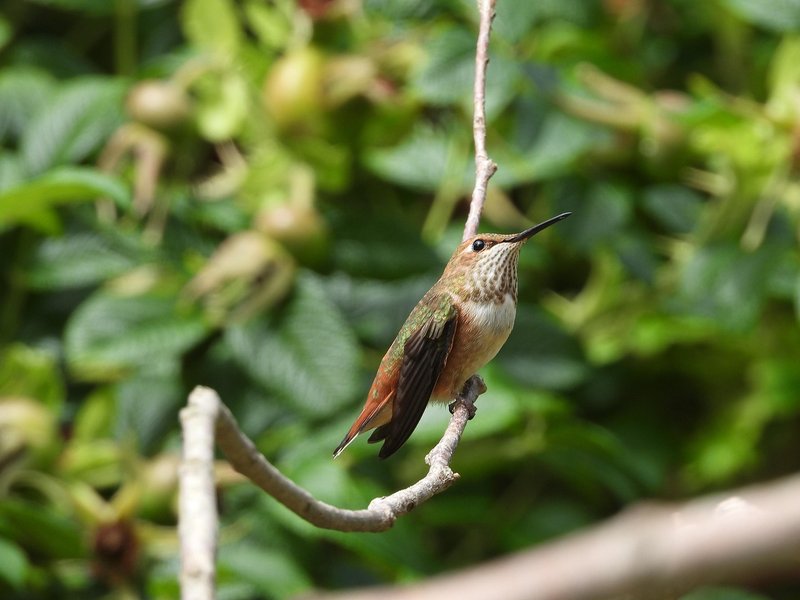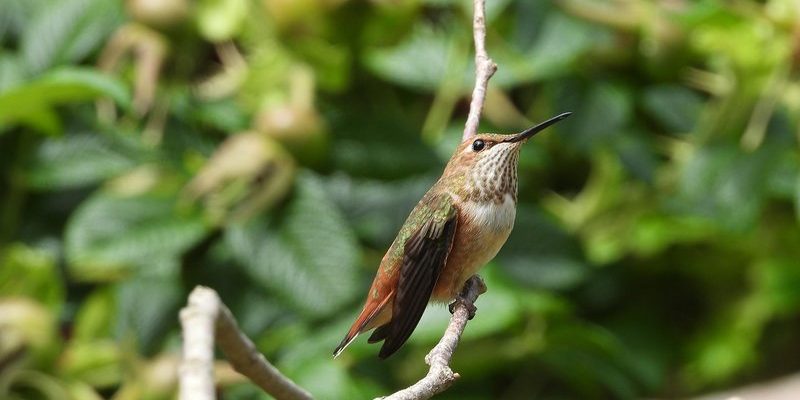
Imagine a tiny creature, almost like a jewel flitting through your garden. That’s the hummingbird for you! These remarkable little birds are not just famous for their vibrant feathers; they are known for their incredible flying abilities and unique feeding habits. With over 300 species, hummingbirds are truly fascinating and bring joy to anyone lucky enough to see them up close.
What sets these birds apart? It’s their agility, speed, and the way they hover in mid-air, sipping nectar from flowers with their long bills. They can even fly backward! In this article, we’ll explore everything you need to know about hummingbirds, from their habitats to their diets, and why they are so special in the avian world.
Physical Characteristics
Hummingbirds come in various sizes, colors, and shapes, making them one of the most diverse bird families. On average, a typical hummingbird measures about 3 to 5 inches long. However, some species can be as small as 2 inches, while others can reach lengths of up to 8 inches. Their feathers are often iridescent, reflecting light in splendid ways. This shimmering effect isn’t just for show; it can help them attract mates.
Another striking feature of hummingbirds is their wings. Unlike most birds, hummingbirds have a unique ball-and-socket joint at their shoulder that allows their wings to rotate 180 degrees. This gives them the ability to hover, fly forward, backward, and even sideways. Can you imagine the workout those wings get? In fact, a hummingbird’s heart can beat up to 1,200 times per minute!
Coloration varies widely among species, ranging from brilliant greens and blues to deep reds and purples. This colorful plumage isn’t just beautiful; it plays a role in their survival, helping them blend into flowers while feeding and making them less visible to predators. Hummingbirds are truly an example of beauty and function combined.
Habitat and Distribution
Hummingbirds are primarily found in the Americas, with the greatest diversity in Central and South America. They thrive in a variety of habitats, from woodlands and gardens to mountainous regions. You might find them in tropical rainforests or deserts, showing just how adaptable these little birds can be. They prefer areas with plenty of flowers since that’s where their food source lies.
While many hummingbirds migrate seasonally, some species are permanent residents in their habitats. For example, the Ruby-throated Hummingbird migrates from North America to Central America for the winter, covering up to 500 miles non-stop during migration. This journey is a matter of survival, as they seek warmer climates where flowers bloom year-round.
The variety of habitats means that there is a hummingbird species for almost every ecosystem. In fact, scientists believe that changes in climate could significantly impact their distribution in the coming years, making it vital to protect their natural habitats. Conserving their environments not only helps hummingbirds but also maintains the biodiversity of local ecosystems.
Diet and Feeding Habits
Hummingbirds are often seen hovering by flowers, and that’s no accident. Their primary source of food is nectar, which provides them with the energy they need for their high metabolism. These little birds have long, specialized tongues that they use to sip nectar. Interestingly, a hummingbird can consume up to twice its body weight in nectar each day!
Aside from nectar, hummingbirds also eat insects and spiders, which are vital for their protein intake. This helps them build muscles and stay healthy. You might wonder how often they feed; a hummingbird can visit hundreds of flowers in a single day, often spending only a few seconds at each bloom. It’s a busy life, but it’s essential to their survival.
One fascinating behavior is their ability to remember the locations of flowers they visit. Even if a flower is emptied of nectar, they know when to return, making them important pollinators. As they flit from one flower to another, they inadvertently transfer pollen, helping plants reproduce. Hummingbirds, in many ways, are like little gardeners of the wild!
Reproduction and Nesting
When it comes to breeding, hummingbirds have quite a unique approach. Males often engage in elaborate courtship displays to attract females, showcasing their vibrant feathers and impressive flying skills. It’s a sight to behold—males dive and swoop through the air, putting on a performance just to win the affection of a female!
Once a female selects a mate, she takes the lead in building the nest. The nest is usually small and cup-shaped, made from materials like plant down, spider silk, and even bits of feathers. This is where she will lay her eggs, typically two at a time. After about two weeks of incubation, the eggs hatch, and the mother continues to care for her young by feeding them regurgitated nectar and insects.
What’s touching is that the mother hummingbird is fiercely protective of her nest. She’ll defend it against larger birds and other potential threats, ensuring her chicks have the best chance of survival. Once the young birds fledge, they often remain close to their mother for a little while, learning to feed on their own before finally taking off into the wild.
Behavior and Social Structure
Hummingbirds are more than just solitary creatures; they can display intriguing social behaviors. While many species are territorial, especially males during the breeding season, they often engage in aerial displays and vocalizations to assert their dominance over feeding areas. You might see them chase away competitors, darting through the air with impressive speed.
Interestingly, not all interactions are hostile. During migration, they can be found in mixed flocks, taking advantage of the safety in numbers. Hummingbirds communicate through various chirps and whistles, which can indicate everything from alarm to courtship. Their vocalizations add another layer to their already fascinating behaviors.
One major factor influencing their social dynamics is food availability. In areas where flowers are plentiful, hummingbirds might tolerate each other more than in regions where food is scarce. This balance between competition and cooperation showcases the complexities of their social structures, reminding us that even tiny creatures can have profound interactions with their environment and each other.
Conservation Status
Despite their beauty and charm, hummingbirds face various threats that put their populations at risk. Habitat loss due to urbanization, agriculture, and climate change are some of the primary challenges they face. As flowers disappear, so does their food source, making survival increasingly difficult. Understanding these threats is crucial to their conservation.
Some species are more vulnerable than others, with certain hummingbirds listed as endangered. Conservation efforts focus on protecting their natural habitats and promoting biodiversity. Planting native flowers in gardens can help attract hummingbirds, providing them with essential resources. Even small actions can contribute to their preservation.
Educating communities about the importance of hummingbirds and their role in ecosystems is vital. By raising awareness, we create a collective responsibility to protect these incredible birds. The next time you spot a hummingbird, remember you’re witnessing a tiny marvel of nature that needs our help to survive.
| Attribute | Details |
|---|---|
| Size | Typically 3 to 5 inches long |
| Wingspan | Varies by species, generally 4 to 5 inches |
| Diet | Nectar, insects, and spiders |
| Speed | Can fly up to 30 mph, with dives reaching 60 mph |
| Lifespan | Typically 3 to 5 years in the wild |
| Habitat | From rainforests to deserts across the Americas |
| Migration | Some species migrate over 500 miles each year |
FAQ
What attracts hummingbirds to my yard?
Hummingbirds are primarily attracted to flowers that produce nectar. Brightly colored blooms, especially red, orange, and pink, can draw them in. Additionally, you can set up hummingbird feeders filled with a sugar-water solution to entice these little birds. Just remember to clean the feeders regularly to keep them safe and healthy!
Do hummingbirds migrate alone or in groups?
While some hummingbirds may migrate alone, others can be found in mixed flocks. During migration, these flocks provide safety in numbers as they travel long distances. However, once they reach their breeding grounds, males are more likely to become territorial and solitary.
How can I help protect hummingbirds?
There are several ways you can help protect hummingbirds. Planting native flowers in your garden provides them with food sources, and avoiding pesticide use helps keep them safe. Supporting local conservation efforts and educating others about their importance is another great way to contribute to their survival.
Why do hummingbirds have such a high metabolism?
Hummingbirds have a high metabolism to support their rapid wingbeats and energetic flight patterns. They need to consume a significant amount of food each day to maintain their energy levels, which is why they feed frequently. This adaptation helps them survive in the wild where food availability can fluctuate.
Do all hummingbirds have the same coloration?
No, hummingbirds display a diverse array of colors and patterns, depending on their species. While some are known for their brilliant iridescent feathers, others may have more muted tones. This variety helps them blend into their environments or attract mates. Each species has its unique look that adds to the overall beauty of hummingbirds.
How long do baby hummingbirds stay in the nest?
Baby hummingbirds typically stay in the nest for about 3 weeks. During this time, the mother feeds them a regurgitated mixture of nectar and insects, helping them grow strong. Once they fledge, they might stay close to their mother for a little while as they learn to feed independently.
Can hummingbirds see colors?
Absolutely! Hummingbirds can see a wide spectrum of colors, even ultraviolet light. This ability helps them identify flowers that produce nectar. Their keen vision is a crucial asset for finding food and avoiding predators.
What is the largest species of hummingbird?
The largest species of hummingbird is the Giant Hummingbird, found in South America. It can reach lengths of up to 8 inches and weigh around 4 ounces. Despite its size, it still exhibits the remarkable flying abilities characteristic of all hummingbirds.
Do hummingbirds have any natural predators?
Yes, hummingbirds face various predators including larger birds like hawks and shrikes, as well as snakes and some mammals. Their small size makes them vulnerable, which is why their agility and quick movements are essential for dodging these threats in the wild.
How fast can a hummingbird fly?
Hummingbirds can reach impressive speeds, flying up to 30 miles per hour in level flight. During courtship, males may dive at speeds up to 60 miles per hour! This incredible speed makes them one of the fastest birds relative to their size.
Do hummingbirds mate for life?
No, hummingbirds do not mate for life. Males and females typically come together only for breeding purposes. After mating, the female raises the young alone, while the male moves on to find other mates. This behavior is common among many bird species.

